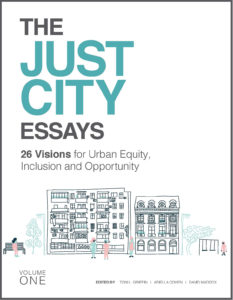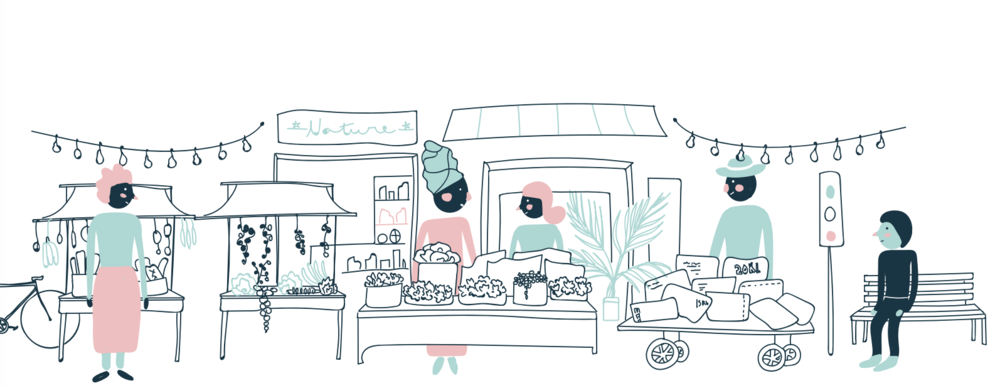“Five years ago, the Harvard Graduate School of Design’s Just City Lab published The Just City Essays: 26 Visions of Inclusion, Equity and Opportunity. The questions it posed were deceptively simple: What would a just city look like? And what could be the strategies to get there? These questions were posed to mayors, architects, artists, philanthropists, educators and journalists in 22 cities, who told stories of global injustice and their dreams for reparative and restorative justice in the city.
 These essays were meant as a provocation, a call to action. Now, during these times of dissonance, unrest, and uncertainty, their contents have become ever more important. For the next 26 weeks [starting June 15, 2020], the GSD and the Just City Lab will republish one essay a week here and at designforthejustcity.org. We hope they may continue conversations of our shared responsibility for the just city.
These essays were meant as a provocation, a call to action. Now, during these times of dissonance, unrest, and uncertainty, their contents have become ever more important. For the next 26 weeks [starting June 15, 2020], the GSD and the Just City Lab will republish one essay a week here and at designforthejustcity.org. We hope they may continue conversations of our shared responsibility for the just city.
We believe design can repair injustice. We believe design must restore justice, especially that produced by its own hand. We believe in justice for Black Americans. We believe in justice for all marginalized people. We believe in a Just City.”
—Toni L. Griffin, Professor in Practice of Urban Planning, founder of the Just City Lab, and editor of The Just City Essays
In It Together
Lesley Lokko
“[A city where] everything comes together… subjectivity and objectivity, the abstract and the concrete, the real and the imagined, the knowable and the unimaginable, the repetitive and the differential, structure and agency, mind and body, consciousness and the unconscious, the disciplined and the trans-disciplinary, everyday life and unending history.” —Edward Soja
No other city that I know of piques the imagination quite like The African City, wherever in Africa that is. I live in Johannesburg; I grew up in Accra: two African cities that have as little—or as much—in common as Chicago or Shanghai, but whose broad geography binds them together in ways that are both entirely fictitious and entirely real. By their very nature, cities are both generic and astoundingly, endlessly specific. The same broad categories of infrastructure, environment, equality and access to amenities apply to all urban centres, almost irrespective of scale. Yet there’s something in—or of/about—The African City that defies easy categorisation. African cities, to paraphrase Soja above, are places where “everything comes together,” in an almost dizzying panoply of contradictory binaries. Black/white; rich/poor; chaotic/controlled; hi-tech/lo-tech, as though there is no space or appetite for the nuance, the in-between, or the subtleties that make up any urban narrative in which most citizens somehow locate, negotiate and recognise themselves.
When the invitation to contribute to the Just City essays project arrived in my Inbox, I was struck by its timing. It’s probably just over ten years ago that I met Max Bond in Accra, sadly for the last time, as it turned out. He was visiting the Ghanaian architect Joe Osae-Addo, and the three of us had dinner at the Golden Tulip Hotel on Independence Avenue whilst waiting for Accra’s terrible, gridlocked in a physical sense) of African cities. What could African American architects and urban designers bring to the table? What had Americans learned about race, class and culture that might prove useful to a new generation of African architects, planners, city-makers? Bond was better placed than most to answer the question: Ghana had been his home in the 1960s, in the first heady decade after independence. He’d seen more of the country than many Ghanaians, myself included, and his views were wide-ranging and broadly cosmopolitan, yet at the same time deeply personal and intuitive. We were joined a little later by another African American architect, Jack Travis, also a close friend of Bond’s. Four architects, two continents, one-and-a-half generations between us and many, many questions, though perhaps fewer answers. Continue reading on designforthejustcity.org…
